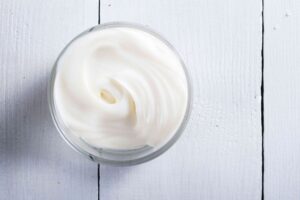:max_bytes(150000):strip_icc():format(jpeg)/Health-GettyImages-1350796358-4839a017009548bc9775317b446746f8.jpg)
Choosing low-sodium foods can help protect overall health since high sodium intake can raise blood pressure and increase heart disease risk. Excess sodium in the bloodstream pulls water into blood vessels, which raises blood volume and, in turn, blood pressure.
The daily sodium recommendation is less than 2,300 milligrams. People in the United States consume more than this, averaging over 3,300 milligrams per day.
People with certain health conditions, such as high blood pressure (hypertension), may need to be particularly aware of their sodium intake. Eating plans like the DASH diet help reduce sodium intake for the prevention and management of at-risk conditions like hypertension.
Most sodium intake comes from packaged foods and restaurant meals rather than the salt shaker. Salt is made up of both sodium and chloride, and manufacturers often use these terms interchangeably. When reading food labels, it’s essential to check for both.
General guidelines and tips for lowering your sodium intake include:
- Choose more fresh foods, such as fruits, vegetables, meats, poultry, and fish, as these are naturally low in sodium
- Check Nutrition Facts labels and compare products, choosing items with less sodium
- Look for foods with 5% or less of the Daily Value (DV) for sodium
- When choosing packaged foods, select those labeled “low sodium,” “reduced sodium,” or “no salt added” whenever possible
- Experiment with alternative flavor-boosters like spices, herbs, lemon, lime, and vinegar at home to reduce the need for salt
- Look up or request nutrition information for restaurant meals, or keep dining out as an occasional treat
- Ask for no salt added to your meal when dining out
Prioritize low-sodium foods in your diet to help manage your intake. It’s important to incorporate all food groups into your diet for balanced nutrition. Remember to check food labels carefully for sodium and salt content when grocery shopping.
Fruits and Vegetables
Fruits and vegetables pack essential vitamins, minerals, and fiber, all important for good health. Including them in your diet can lower the risk of certain cancers and chronic diseases.
Many people don’t eat enough produce. Incorporate servings of fruits and vegetables into your main meals, and eat them as snacks. Carrots and fresh hummus or a fruit smoothie make a filling and flavorful snack between meals.
Fresh fruits and vegetables typically have no added salt. You can also choose canned or frozen options. To reduce sodium, opt for frozen and canned fruits without added sugar.
Choose frozen vegetables without added butter or sauces, as these can include salt. Go for no-added-salt or low-sodium canned vegetables and vegetable juices. You can also rinse canned vegetables to help remove some of the sodium.
Grains
Grains include barley, cornmeal, oats, rice, and wheat. This group also includes grain products such as bread, breakfast cereals, oatmeal, and tortillas. Many of these items are staple foods, providing essential nutrients. Some packaged foods may contain sodium. Compare labels to find options with no or less sodium.
Be cautious with packaged grain-based snacks like popcorn, chips, and pretzels, as they often contain high levels of sodium. Choose lower-sodium or no-added-salt versions. Focus on including more whole grains in your diet to support gut, heart, and overall health.
Proteins
Choose fresh or frozen meats, poultry, and seafood with minimal or no added ingredients. Opting for plain varieties lets you control the flavor at home, allowing you to use little or no salt. When selecting packaged options with added ingredients, compare labels to find those with lower sodium content.
Fresh eggs are naturally low in sodium, with only about 65 milligrams in one large egg, less than 3% of the DV. Eggs in packaged products, such as a premade breakfast meal, may contain added sodium, so it’s important to check the label.
Plant foods like legumes, including beans, lentils, and peas, are great alternatives to animal proteins. Choose dried or canned varieties that are low-sodium or have no added salt. You can also rinse canned beans to help reduce some of the sodium.
Nuts and seeds provide protein, healthy fats, and essential nutrients. They make a nutritious snack on their own or paired with fruits and vegetables. Select unsalted varieties.
Fats
Fats, found in animal products and oils, are essential for energy and cell function. Prioritize unsaturated fats to support heart health.
Choose lean cuts of meat and poultry, and check labels for sodium if they’re packaged with added ingredients. Fatty fish, like salmon, is a good source of heart-healthy omega-3 fatty acids and is typically low in sodium.
Oils typically don’t have added sodium, and vegetable oils, like canola and olive oil, are rich in healthy unsaturated fats.
Certain plant foods, like avocados and nuts, are also high in unsaturated fats. Make sure to choose unsalted nut varieties.
Dairy and Dairy Alternatives
The dairy group includes milk, yogurt, cheese, and calcium-fortified non-dairy alternatives. Dietary guidelines recommend choosing low-fat or non-fat versions.
Pay special attention to cheese, as some can be high in sodium. Compare labels and select cheeses with lower sodium content. Cheeses like fresh mozzarella, goat cheese, and ricotta tend to have less sodium. You can also choose low-sodium varieties of certain cheeses.
When checking sodium levels, remember to compare products by the same serving size, such as ounce by ounce or slice by slice.
Condiments, Oils, and Seasonings
Compare product labels for condiments like dips, ketchup, salsa, and salad dressings, and choose those with lower sodium or no added salt.
Single-ingredient dried spices and herbs usually don’t contain added salt. Be mindful of seasoning blends that might have salt added; check the sodium content and opt for products with lower amounts or that are salt-free.
When aiming to reduce sodium intake, it’s helpful to limit foods typically high in salt, such as:
- Canned foods packed in broth or salt (unless rinsed before use)
- Cured, processed, or smoked meats such as bologna, ham, hot dogs, and sausage
- Instant grains or noodles with added salt or salt-containing flavor packets
- Salty snacks like chips, crackers, popcorn, and salted nuts and seeds
- Frozen dinners
- Condiments and seasonings such as soy sauce, monosodium glutamate (MSG), fish sauce, and bouillon cubes
The DASH diet, short for Dietary Approaches to Stop Hypertension, was originally designed to help reduce high blood pressure (hypertension). By focusing on nutrient-rich foods, the diet naturally supports lower sodium intake and can help reduce low-density lipoprotein (LDL or “bad”) cholesterol.
The DASH diet guidelines include:
- Eat fruits, vegetables, and whole grains
- Include non-fat or low-fat dairy, fish, poultry, eggs, legumes, nuts, seeds, and vegetable oils
- Limit high-saturated fat foods, such as fatty meats, full-fat dairy, and tropical oils like coconut, palm kernel, and palm oil
- Reduce sugary drinks and sweets
- Limit packaged snacks, which often contain high levels of salt, sugar, and fat
Research shows adopting the DASH diet can significantly reduce blood pressure in adults, regardless of starting levels. This effect may be even more significant for younger people and people who consume high sodium daily.
To help further reduce sodium in your diet, try the below tips for home cooking, meal prepping, and dining out:
- Mix lower-sodium versions of foods with regular versions to ease the transition
- Go for healthier cooking methods to reduce reliance on salt (e.g., grilling, braising, roasting, searing, sautéing) and limit methods that typically use added salt (e.g., frying)
- Keep the salt shaker off the table and taste your food before adding salt
- Dilute canned soup with water and add a splash of acidity (lemon juice, vinegar, or tomato) and spices or herbs
- When making sandwiches, use freshly cooked meat, poultry, or fish instead of deli meats, and choose lower-sodium cheeses and spreads
- Reduce sodium in jarred spaghetti or pasta sauce by mixing in fresh tomatoes or no-added-salt canned tomatoes and fresh herbs like basil or oregano
- Opt for low-sodium foods when dining out and request no-salt-added fruits or vegetables on the side
- Share large restaurant portions with a friend to avoid consuming extra salt and calories
- Eat fruits and vegetables as snacks, pairing them with nutritious options like no-salt-added nuts or low-sodium salsa
Reducing sodium intake may seem challenging, but many foods—such as fruits, vegetables, meats, seafood, and eggs—naturally contain minimal salt. When shopping, focus on finding fresh, no-salt-added versions of these foods. Examine the Nutrition Facts and ingredient labels of packaged items to choose those lowest in sodium.
Learning to prepare and flavor meals without relying heavily on salt is important for making healthier choices. The DASH diet can provide a structured approach for effectively lowering salt intake. Try making small adjustments over time, shifting your eating patterns and preferences to include less salt.













